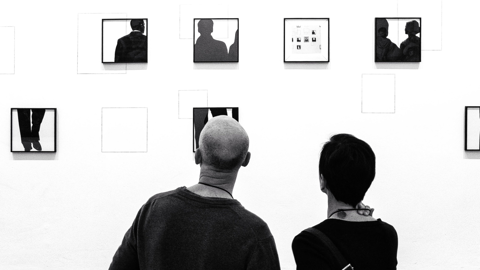As part of the Wheeler Centre’s Hot Desk Fellowship programme, Christy Tan worked on a hybrid collection of poetry and creative non-fiction. The excerpt below is a triptych of ekphrastic poems exploring perception in relation to perspective and positionality.
Impossible Figures
three bodies identical except in size painted in descending order oblique faces slightly turning away from me carefully fixed on the emptiness
of an empty cave
looking back into darkness growing darker the longer I stare at them staring into its dark
forgetting, so that I may retrieve what has been disappeared
condensing accumulating experience being extended beyond their immediate selves spilling in and
out of one another three bodies more than the sum of their drifting parts disappearing from
their surroundings disappearing into their surroundings flesh and landscape constructed using same brush neither taking precedence part
of the same irreducible whole I take a step
back, as if
proximity between me
and the bodies has caused contents of its outline to collapse I step forward from specific angle alignment of attentiveness
offering itself to me coinciding
in sudden pulse previously reticent shapes and lines coalesce slowly emerging re-organising themselves into discrete stretched
dispersed across multiplying bodies resurrecting something different each time
~
crumpled face, relegated to corner upon which rest of the image rests her gaze
locking two women into centre frame
I glimpse their tired blurry expressions, offset by crumpled face relegated to corner watching intently, waiting to be watched in return
I watch the face watching the women and am waiting too
~
To draw the line, you expand with your destination. The line is not two dimensional.
The line serves a double function, creating a kind of liminal space where you are recruited to embody the bordering line between adjacent shapes. On either side, a recognition oscillates between boundaries. The human mind and its eyes are not capable of comprehending both at the same time. You fabricate a flickering between them, an optical
illusion to imagine a common relationality. You are what hold the shapes together. They are held together by what separates them. When piecing together the fragments that evade your grasp, you inspect each angle at its outermost edge. Each angle unfolding in relation to the next, gliding in and out of a slippery geometry, destabilising any permanent structure from calcifying. Your desire for simultaneity sustains their ceaseless movement, iridescent in its undulating,
